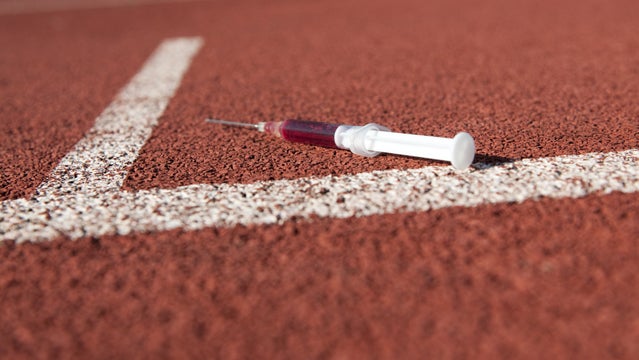By now, you’ve seen the : “EPO Doesn’t Boost Performance.” That’s right: In the British Journal of Clinical Pharmacology, that “there is no scientific basis to conclude rHuEPO has performance enhancing properties in elite cyclists.” But should you believe them?
We could answer that question with anecdotal evidence—���ܳٲ������’s own Stuart Stevens dabbled with EPO for a story and found it to be incredibly effective—but we turned to Dr. Michael J. Joyner, a physician-researcher and one of the world’s leading experts on human performance and exercise physiology for his take.
“This thing is nuts,” he says. “It’s correct about only one thing: There are essentially no studies on really, really elite people.” In other words: Don’t go reinstating Lance Armstrong into the pantheon just yet.
So where did the study go wrong? It goes back to basic exercise physiology and the science of how races are won, Joyner says. The researchers don’t understand the relationship between VO2 max—your body’s maximum ability to consume oxygen, or your “performance ceiling”—and other metrics like , a key predictor of endurance performance, Joyner says.
(In the context of cycling, a five-minute-long pursuit would best correspond to a VO2 max effort, while a 60-minute time trial would closely match your lactate threshold.)
After reviewing the existing literature on EPO, the researchers found that a doping regimen can lead to between a 7 and 9.7 percent increase in VO2 max, with an “increase in performance estimated by a time-to-exhaustion test of … 9.4 percent (versus 1.5 percent in placebo-treated subjects) and 16.6 percent in trained subjects.”
Here’s how: EPO is a naturally-produced hormone that regulates red blood cell production. Red blood cells happen to carry oxygen, the delivery of which is a limiting factor in endurance performance. More EPO means more red blood cells which means a faster you.
The researchers actually pointed all of this out, but they weren’t convinced that EPO would have an effect on race-day performance because “cyclists only work a small amount of time at their peak intensities,” they wrote.
That was mistake number one, Joyner says. Even if most racing happens well below VO2 max territory, the racing that matters—mountain-top finishes and time trials—happen much closer to VO2 max. Mistake number two: Ignoring that boosting your VO2 max can lead to other benefits, such as a jump in your lactate threshold. “They don’t realize that your lactate threshold is a percentage of your VO2 max,” he says. “If your LT [lactate threshold] normally is 80 percent of VO2 max, and your VO2 max goes up, it’s 80 percent of a higher number. Your performance improves.”
What about a real world example? Luckily for us, Captaintbag—a mysterious cycling blogger—has done the math. The numbers are solid, and based around one very basic relationship, Joyner says. Haemoglobin—a protein which carries oxygen—and your VO2 max are . the changes in a rider’s haemoglobin based on how much EPO he is taking (or blood he is transfusing). From there, he can predict the rider’s new VO2 max and threshold power. In other words, he can tell you how quickly a rider can race clean, and on the program.
The numbers are startling. In one example, Captaintbag looked at the power output of domestic pro cyclist Brad Huff and —a very-low dose that probably wouldn’t get you caught, a medium-dose (which might also fly under the radar), or a high “Postal” dose.
The results: From putting out 4.875 watts/kg at threshold, Huff could see his numbers rise to 5.25 watts/kg on the very-low dose program, 5.44 watts/kg on the medium dose, and 5.74 watts/kg on the “Postal” program—up to a 17 percent increase. “Presumming that he’d still be wurth [sic] a damn after 4hrs/ he’s not quite winning GTs [grand tours like the Tour de France]/ he’s a sprinter anyways/ but its [sic] a likely ticket to europe [sic],” Captaintbag writes in verse.
THE BOTTOM LINE: There’s no denying that EPO enhances performance. In fact, it can turn low-level pros into world class riders.


